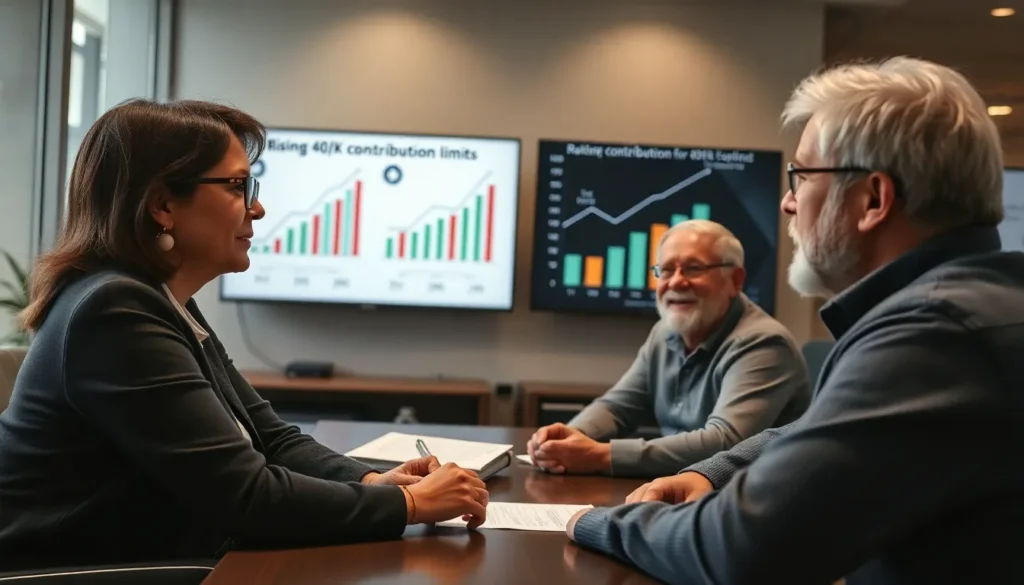Art integration learning is transforming the educational landscape by blending creative expression with core academic subjects. This innovative approach allows students to explore complex concepts through various artistic mediums, fostering deeper understanding and engagement. By incorporating art into the curriculum, educators can cater to diverse learning styles and encourage critical thinking.
As schools increasingly recognize the benefits of this method, they’re finding that art integration not only enhances academic performance but also nurtures emotional and social development. Students become more motivated and enthusiastic about learning when they can express themselves creatively. This article delves into the principles of art integration learning, its advantages, and practical strategies for implementation in classrooms.
Table of Contents
ToggleOverview of Art Integration Learning
Art integration learning combines creative expression with core academic subjects, enhancing students’ understanding and engagement. This educational approach addresses diverse learning styles while promoting holistic development.
Definition of Art Integration
Art integration refers to the intentional use of artistic processes and experiences to facilitate learning across various subjects. It encompasses techniques like visual arts, music, dance, and drama, allowing students to connect concepts and ideas through creative expression. For instance, integrating a painting project with a history lesson enables students to explore cultural contexts while developing artistic skills.
Importance in Education
Art integration plays a vital role in education by fostering critical thinking, creativity, and collaboration among students. It encourages learners to engage with material actively, leading to improved retention and comprehension. Research shows that students participating in art-integrated curricula perform better academically, developing both cognitive and social-emotional skills. By incorporating art, educators create a dynamic learning environment that nurtures creativity and innovation, essential for success in a rapidly evolving world.
Benefits of Art Integration Learning

Art integration learning offers numerous benefits that enhance educational experiences. This approach nurtures cognitive development while fostering social and emotional growth among students.
Cognitive Development
Cognitive development improves significantly through art integration learning. Students engage critical thinking skills when they analyze artistic projects linked to academic subjects. They build problem-solving abilities as they navigate creative processes. For instance, integrating mathematics with visual arts involves geometric design, reinforcing spatial reasoning. Research indicates students in art-integrated programs outperform peers in standardized assessments by up to 20%. This integration supports overall academic performance, enhancing retention and comprehension of complex concepts.
Social and Emotional Growth
Social and emotional growth also flourishes in art integration learning environments. Collaborative projects encourage teamwork and communication skills. Students learn to express emotions through artistic avenues, promoting self-awareness. Engaging in creative activities reduces anxiety and fosters resilience, critical for personal development. According to studies, students involved in art programs exhibit increased empathy and improved interpersonal relationships. This holistic approach not only enhances academic skills but also nurtures well-rounded individuals prepared for diverse life challenges.
Strategies for Implementing Art Integration
Integrating art into educational practices requires thoughtful strategies that enhance curriculum design and promote collaboration among students. These approaches help nurture a creative environment conducive to learning.
Curriculum Design
Art integration demands a well-structured curriculum that intertwines artistic processes with core subjects. Educators can start by identifying essential academic content and brainstorming corresponding artistic projects. For instance, linking mathematics with visual arts encourages students to explore geometry through sculpture. Aligning objectives ensures clarity and effective learning outcomes.
Incorporating various artistic mediums—such as visual arts, music, and drama—allows flexibility in teaching methods. Teachers can select assignments that resonate with students’ interests and strengths. Employing project-based learning gives students ownership over their education, fostering deeper engagement with the material. Regular assessments of both artistic and academic skills ensure students achieve desired competencies.
Collaborative Projects
Collaborative projects strengthen art integration by promoting teamwork and communication among students. Group activities encourage sharing diverse perspectives, enriching the creative process. For example, students can work together to create a performance piece that captures historical events, blending research, writing, and artistic expression.
Encouraging peer feedback and collaborative brainstorming sessions builds trust and enhances problem-solving abilities. Teachers can structure these projects to include roles—such as researcher, artist, and presenter—ensuring each student contributes uniquely. Documentation of group processes also reinforces accountability and reflection, providing insights into personal and group growth.
Implementing these strategies cultivates an environment where creativity thrives, benefiting both academic and social-emotional development.
Challenges in Art Integration Learning
Art integration learning presents challenges that educators must address to ensure effective implementation. Key obstacles include teacher training and resource availability.
Teacher Training
Teacher training often falls short in preparing educators for art integration. Many teachers lack sufficient knowledge of artistic processes and their connections to academic subjects. Comprehensive professional development programs can enhance teachers’ skills, ensuring they feel confident in integrating art effectively. Training should focus on practical applications and collaborative strategies, fostering a deeper understanding of how art enhances learning. Ongoing support and mentorship programs can further equip teachers with the tools necessary for success in art-integrated classrooms.
Resource Availability
Resource availability poses another significant challenge in art integration learning. Schools frequently encounter limited budgets that restrict access to art supplies, technology, and expert artists. When resources are scarce, teachers may struggle to implement creative projects effectively. Establishing partnerships with local art organizations can provide additional support and resources. Seeking grant opportunities offers potential funding, enabling schools to invest in materials and programs. Moreover, sharing resources among schools can help maximize the impact of art integration across educational institutions.
Art integration learning stands as a powerful approach to education that enriches students’ academic experiences. By weaving artistic processes into core subjects, it not only enhances understanding but also nurtures essential skills like creativity and collaboration. The benefits extend beyond academics, fostering emotional growth and critical thinking.
Despite the challenges educators face in implementing this method, the potential rewards underscore its value. With the right support and resources, art integration can transform classrooms into vibrant spaces where students thrive. Embracing this innovative approach prepares learners for future challenges and cultivates a lifelong appreciation for the arts.






